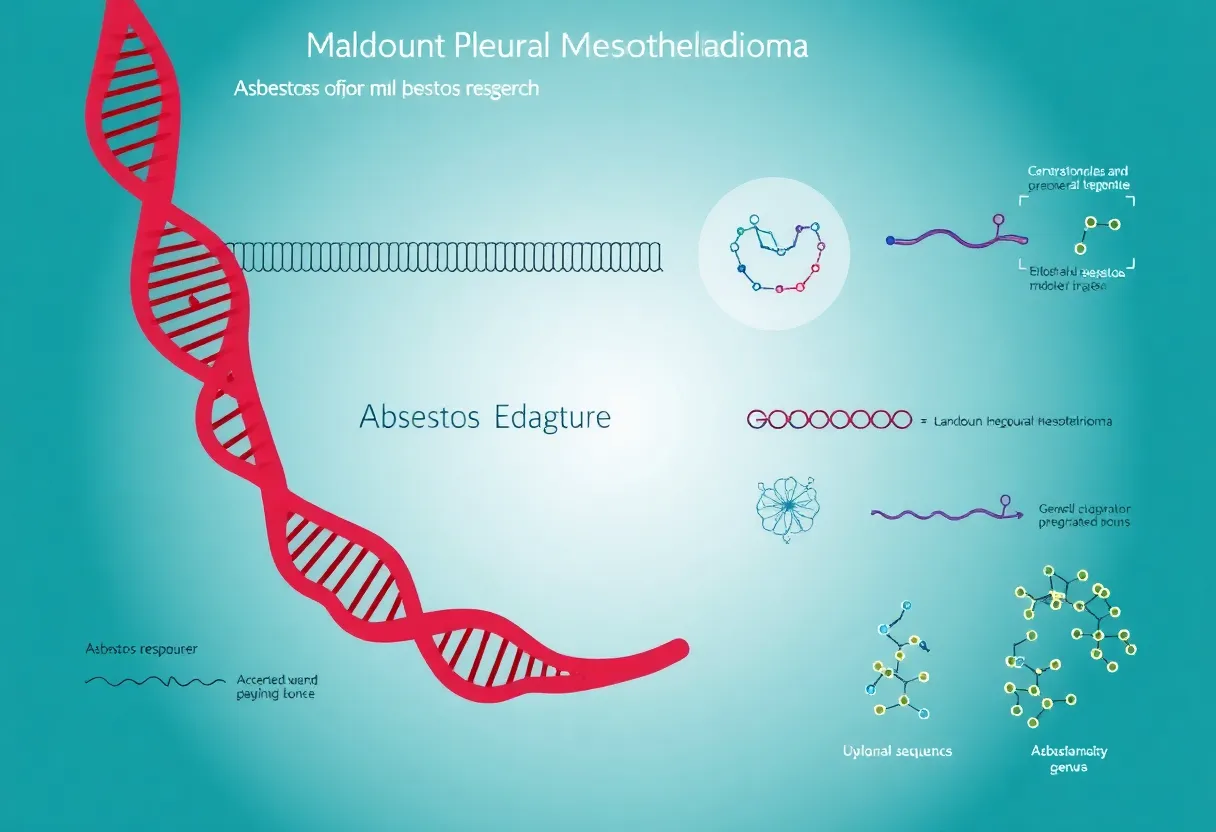News Summary
A recent study uncovers genetic factors related to asbestos exposure and its connection to malignant pleural mesothelioma, enhancing diagnostic and treatment potential.
Groundbreaking Study Reveals Genetic Insights into Malignant Pleural Mesothelioma
The Perilous Link Between Asbestos and MPM
Malignant Pleural Mesothelioma (MPM) has long been associated with exposure to asbestos, a hazardous material notorious for its health risks. In a recent study led by researcher Laura Cowen, significant advancements have been made in understanding the genetic implications of asbestos exposure in MPM patients. This research, published in the journal *Experimental and Molecular Pathology*, sheds light on the complex molecular mechanisms underlying this aggressive cancer.
Research Overview and Objectives
The study aimed to construct a comprehensive molecular roadmap illustrating how asbestos can lead to the development of MPM. By examining gene expression in patients with documented asbestos exposure, Cowen and her team have made strides in identifying potential biomarkers that could revolutionize diagnosis and treatment protocols. Their findings emphasize the urgent need for further validation to transition these insights into practical clinical applications.
Dive into the Data
This intensive research utilized RNA sequencing data sourced from The Cancer Genome Atlas, focusing on 25 patients diagnosed with MPM. Among these, 13 had confirmed histories of asbestos exposure, while a control group of 12 unexposed individuals was also analyzed. What emerged from this rigorous investigation was a startling ratio of downregulated genes—approximately three times the number of upregulated genes—with a total of 25 genes showing increased expression and 80 showing decreased expression in those affected by asbestos.
Noteworthy Genetic Findings
Among the myriad of findings, researchers spotlighted specific genes that appear to have a critical role in MPM pathogenesis. Upregulated genes were primarily linked to responses to reactive oxygen species (ROS) and heavy metal exposure. This suggests that asbestos exposure not only causes physical damage to cells but also triggers a cascade of inflammatory responses leading to cancer evolution.
Conversely, downregulated genes such as IGFBP7 and COL4A1 revealed potential vulnerability in cellular signaling pathways, illuminating how asbestos interferes with normal cellular integrity. This dual analysis provides a clearer picture of how genetic alterations can influence the likelihood and progression of MPM.
Emphasizing Prognostic Potential
The research underscored the potential for several of the identified genes to serve as diagnostic biomarkers for MPM, particularly MT1G and MMP1. These could pave the way for earlier diagnosis and improved patient management strategies. Interestingly, some upregulated genes, like SNCA and RYR1, though not previously linked directly to asbestos exposure, showed involvement in mechanisms such as ferroptosis—an iron-dependent form of cell death—which also warrants further exploration.
Implications and Future Directions
The prognosis for MPM remains grim, with median survival rates hovering around a disheartening 18 months. Despite the troubling outlook, this groundbreaking research brings a beacon of hope. By understanding the molecular interactions at play, scientists can work toward identifying novel diagnostic and therapeutic strategies aimed at improving patient outcomes. The study calls for functional characterization of the identified genes through further in vitro and in vivo investigations.
The Role of Technology in Future Research
With the incorporation of artificial intelligence, the analysis of gene expression patterns related to MPM risk is anticipated to enlarge. Such technological advancements could further elucidate the connections between asbestos exposure and mesothelioma, guiding future studies and therapeutic approaches.
Concluding Thoughts
While the current findings present a significant leap in the understanding of MPM’s molecular landscape, the journey is far from over. Continuous exploration and validation of these insights are essential. Equipped with this new knowledge, the medical and scientific communities can push toward innovative diagnostic methods and treatments that cater to the unique challenges posed by malignant pleural mesothelioma, thereby enhancing the quality of life for those affected by this devastating illness.
Deeper Dive: News & Info About This Topic
HERE Resources
The Ongoing Threat of Legacy Asbestos: A Public Health Crisis
Health Under Siege: The Asbestos Crisis and Public Health Setbacks
Trump Administration Takes Steps to Reconsider Asbestos Ban
EPA Reconsiders 2024 Ban on Chrysotile Asbestos
Barretts Minerals: Bankruptcy Judge Questions Asbestos Levels in Talc from Montana
Philadelphia School District Faces Charges Over Asbestos Violations
Government’s Sharp Turn on Asbestos Ban Sparks Outrage
The School District of Philadelphia Faces Unprecedented Criminal Charges for Asbestos Violations
Chrysotile Asbestos Ban Faces Re-examination Under EPA
The Importance of Early Screening for High-Risk Groups



















